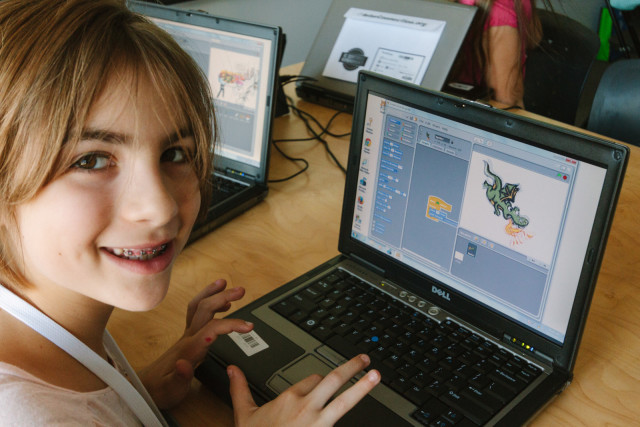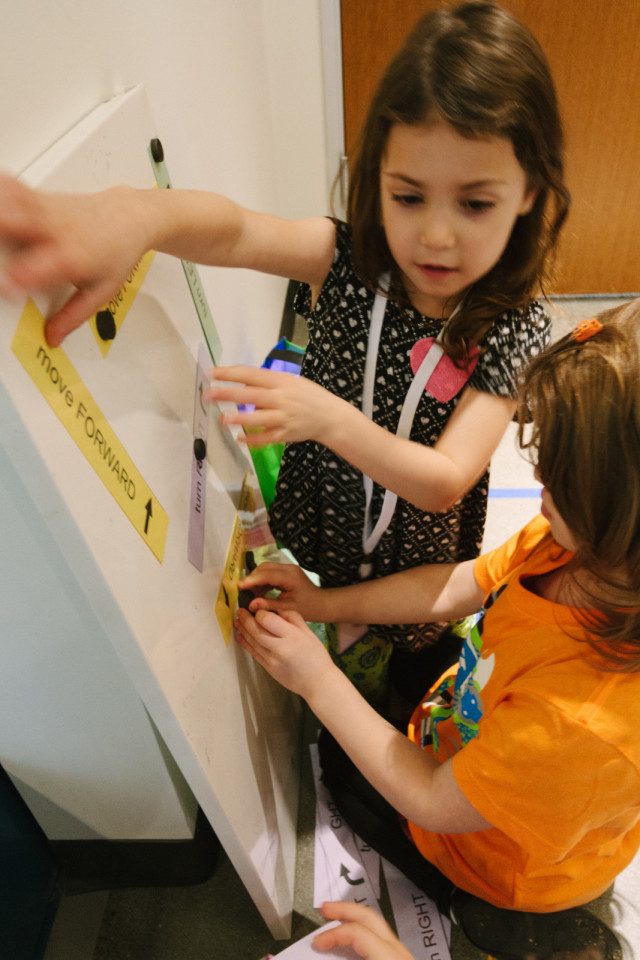
To quote an old friend of mine from 3rd grade, “I believe the children are our future.” Having my own two little boys, I couldn’t agree more. But nothing has solidified that sentiment for me more than the recent Kids Day of Engineering that I helped organize.
Zillow invited employees to bring their children into the office for our spin on the traditional “bring your kids to work day” — a day where kids broke out into classes and were taught age-appropriate tech activities by some amazing local teachers. As I watched more than 250 little people, ages 3 to 17, tackle the challenges presented to them with pure enthusiasm and creativity, I was struck by the fact that children are natural engineers.
 I think that engineering, at its core, is about recognizing a problem, thinking through potential solutions, choosing a path to pursue, executing on it and then learning from that and trying again. Sometimes the execution fails completely; it can always be improved upon. The downfall for many adults is that we think we know what is and is not possible. We’ve already tried this, we’ve already failed at that, we believe we understand the limitations. This ends up being a handicap that kids don’t have — they don’t have these preconceived notions of what is not possible.
I think that engineering, at its core, is about recognizing a problem, thinking through potential solutions, choosing a path to pursue, executing on it and then learning from that and trying again. Sometimes the execution fails completely; it can always be improved upon. The downfall for many adults is that we think we know what is and is not possible. We’ve already tried this, we’ve already failed at that, we believe we understand the limitations. This ends up being a handicap that kids don’t have — they don’t have these preconceived notions of what is not possible.
The experience of engineering — both the lesson-rich failures and triumphant successes — can be extremely fulfilling and inspiring. Introducing our children to such activities while they still come naturally to them is fantastic all around. With more and more STEM jobs needing to be filled, and only 16 percent of high school seniors demonstrating an interest in these fields, we need to get our kids excited about engineering. And getting experience with problem solving, creative thinking and inventiveness will undoubtedly serve our children well, regardless of the careers they eventually pursue.
After re-energizing themselves with spaghetti and ice cream, the kids that wanted to presented their projects to all of their peers and parents. The pride and excitement they felt about having solved a problem and creating something new — from the 3-year-olds with their gear towers to the 6-year-olds with their robot creatures to the 16-year-olds with their interactive computer games — was moving and energizing. It made me want to harness that youthful optimism in every problem I tackle. And it inspired me to keep finding ways of exposing children to the inventiveness and problem solving that we will someday need of them.
Want to be inspired by budding engineers? Check out the jobs available at Zillow in offices across the country!
Photos by Adam Cohn.